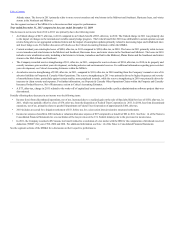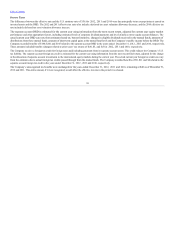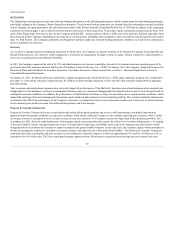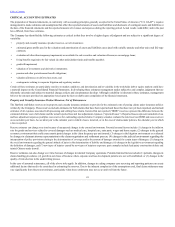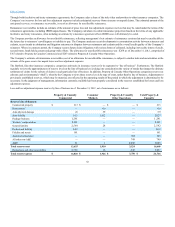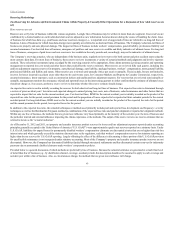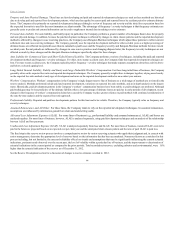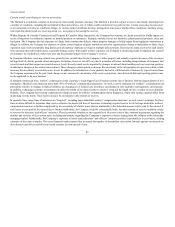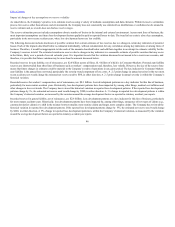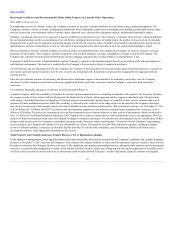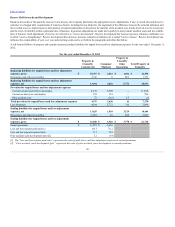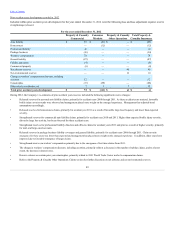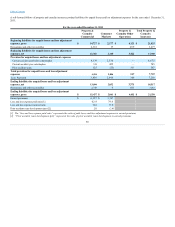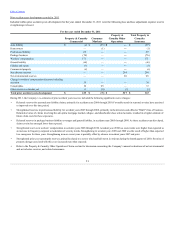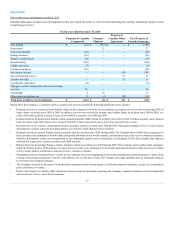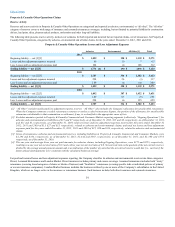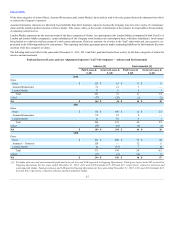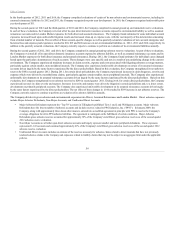The Hartford 2012 Annual Report Download - page 48
Download and view the complete annual report
Please find page 48 of the 2012 The Hartford annual report below. You can navigate through the pages in the report by either clicking on the pages listed below, or by using the keyword search tool below to find specific information within the annual report.
Table of Contents
How A&E reserves are set
In establishing reserves for asbestos claims, the Company evaluates its insureds’ estimated liabilities for such claims using a ground-up approach. The
Company considers a variety of factors, including the jurisdictions where underlying claims have been brought, past, pending and anticipated future claim
activity, disease mix, past settlement values of similar claims, dismissal rates, allocated loss adjustment expense, and potential bankruptcy impact.
Similarly, a ground-up exposure review approach is used to establish environmental reserves. The Company’s evaluation of its insureds’ estimated liabilities
for environmental claims involves consideration of several factors, including historical values of similar claims, the number of sites involved, the insureds’
alleged activities at each site, the alleged environmental damage at each site, the respective shares of liability of potentially responsible parties at each site, the
appropriateness and cost of remediation at each site, the nature of governmental enforcement activities at each site, and potential bankruptcy impact.
Having evaluated its insureds’ probable liabilities for asbestos and/or environmental claims, the Company then evaluates its insureds’ insurance coverage
programs for such claims. The Company considers its insureds’ total available insurance coverage, including the coverage issued by the Company. The
Company also considers relevant judicial interpretations of policy language and applicable coverage defenses or determinations, if any.
Evaluation of both the insureds’ estimated liabilities and the Company’s exposure to the insureds depends heavily on an analysis of the relevant legal issues
and litigation environment. This analysis is conducted by the Company’s lawyers and is subject to applicable privileges.
For both asbestos and environmental reserves, the Company also compares its historical direct net loss and expense paid and reported experience, and net loss
and expense paid and reported experience year by year, to assess any emerging trends, fluctuations or characteristics suggested by the aggregate paid and
reported activity.
Once the gross ultimate exposure for indemnity and allocated loss adjustment expense is determined for its insureds by each policy year, the Company
calculates its ceded reinsurance projection based on any applicable facultative and treaty reinsurance and the Company’s experience with reinsurance
collections.
Uncertainties Regarding Adequacy of Asbestos and Environmental Reserves
A number of factors affect the variability of estimates for asbestos and environmental reserves including assumptions with respect to the frequency of claims,
the average severity of those claims settled with payment, the dismissal rate of claims with no payment and the expense to indemnity ratio. The uncertainty
with respect to the underlying reserve assumptions for asbestos and environmental adds a greater degree of variability to these reserve estimates than reserve
estimates for more traditional exposures. While this variability is reflected in part in the size of the range of reserves developed by the Company, that range
may still not be indicative of the potential variance between the ultimate outcome and the recorded reserves. The recorded net reserves as of December 31, 2012
of $2.09 billion ($1.79 billion and $297 for asbestos and environmental, respectively) are within an estimated range, unadjusted for covariance, of $1.6
billion to $2.4 billion. The process of estimating asbestos and environmental reserves remains subject to a wide variety of uncertainties, which are detailed in
Note 13 of Notes to Consolidated Financial Statements. The Company believes that its current asbestos and environmental reserves are appropriate. However,
analyses of future developments could cause the Company to change its estimates and ranges of its asbestos and environmental reserves, and the effect of these
changes could be material to the Company's consolidated operating results, financial condition and liquidity. Consistent with the Company's long-standing
reserve practices, the Company will continue to review and monitor its reserves in Property & Casualty Other Operations regularly, including its annual
reviews of asbestos liabilities, reinsurance recoverables and the allowance for uncollectible reinsurance, and environmental liabilities, and where future
developments indicate, make appropriate adjustments to the reserves.
In the opinion of management, based upon the known facts and current law, the reserves recorded for the Company’s property and casualty insurance
products at December 31, 2012 represent the Company’s best estimate of its ultimate liability for losses and loss adjustment expenses related to losses covered
by policies written by the Company. However, because of the significant uncertainties surrounding reserves, and particularly asbestos and environmental
exposures, it is possible that management’s estimate of the ultimate liabilities for these claims may change and that the required adjustment to recorded reserves
could exceed the currently recorded reserves by an amount that could be material to the Company’s results of operations, financial condition and liquidity.
47


